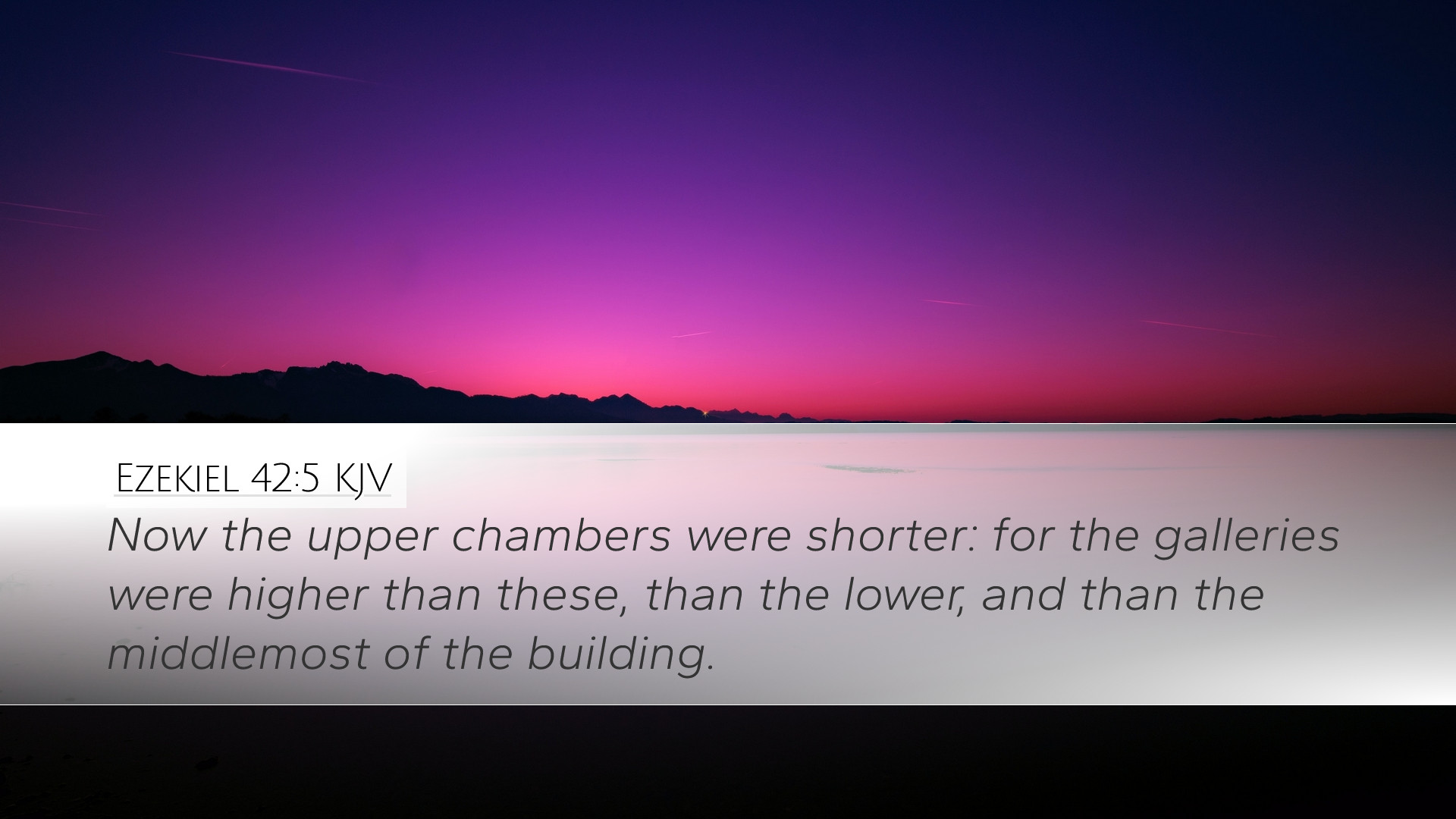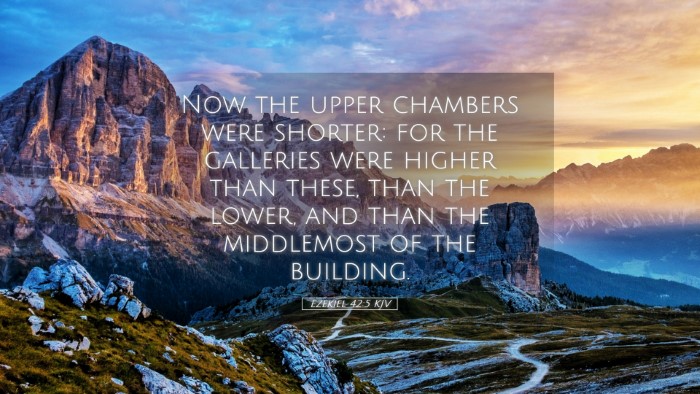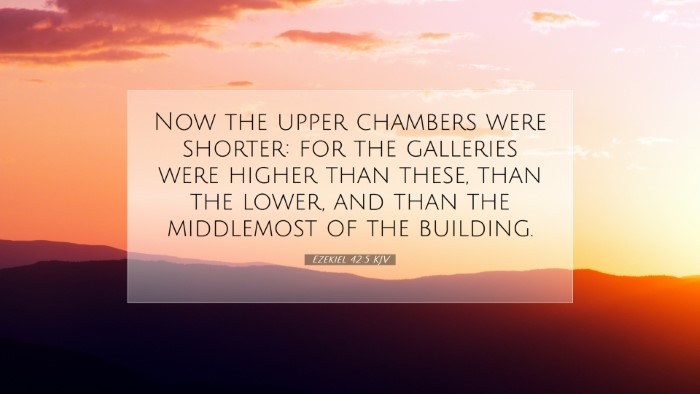Ezekiel 42:5 Commentary
Verse: Ezekiel 42:5 - "Now the upper chambers were shorter: for the chambers were in the courts of the house of the Lord, and their windows were toward the north." (KJV)
Contextual Background
The Book of Ezekiel is a prophetic work that addresses the exilic community of Israel. Ezekiel, a priest and prophet, provides vivid visions and messages concerning God's judgment against Israel for her sins, but also offers hope for restoration. Chapter 42 presents a detailed description of the temple architecture and its various chambers, shedding light on the spiritual and communal life of the Israelites.
Analysis of the Verse
Ezekiel 42:5 speaks of the upper chambers being shorter, emphasizing an architectural feature of the temple precinct. This detail, while seemingly minor, carries significant implications regarding the design of the temple and the symbolism inherent in its structure.
Architectural Significance
Matthew Henry notes that the upper chambers’ shortness signifies a carefully intended design, where the emphasis is less on grandeur and more on functionality and spiritual purpose. The layout indicates a divine order and purpose within the temple's construction.
Comparison of Chambers
Albert Barnes elaborates that the deliberate design differences between the upper and lower chambers likely reflect the hierarchical structure of worship and service in the temple. This arrangement signifies the separation of the sacred from the common, reinforcing the reverence that must accompany worship.
Theological Implications
Adam Clarke interprets the upper chambers as representing the elevated spiritual state that believers should aspire to. The shortness could symbolize humility before God; an important attribute of the faithful. The reduction in size implies that while closeness to God brings a higher calling, it also requires a life lived in humility.
Spiritual Reflection
In our walk with God, there is a tendency to pursue positions of influence or power (the 'upper chambers'), but the Bible invites us to cultivate a spirit of humility. This principle is entrenched in the teachings of Jesus, especially in passages like Matthew 23:12: "Whoever exalts himself will be humbled, and whoever humbles himself will be exalted." The construction of the temple serves as a metaphor for the spiritual architecture within believers’ lives.
Symbolism of Windows Toward the North
The mention of 'windows being toward the north' serves as a reminder of God’s providence and watchful eye. The north traditionally symbolizes judgment and is associated with the presence of God. In this context, it signifies that the temple is always under God's watch, emphasizing Divine oversight and presence.
Exegesis of 'North' in Scripture
Drawing from Henry’s Commentary insights about directions in Scripture, the north often connotes a place of challenge or enemies (e.g., Babylon being located to the north of Israel). However, it can also denote hope as God's presence often meets His people in their most trying circumstances. This duality unveils the depth of God’s relationship with His people - He is both a judge and a redeemer.
Practical Insights for Ministry
As pastors and theologians reflect on Ezekiel 42:5, several practical applications arise:
- Humility in Leadership: Leaders are called to recognize their roles as servants, following the model shown by the architecture of God’s house.
- Focus on Divine Purpose: Church structures should reflect God’s purposes—functions serve mission rather than mere aesthetics.
- Awareness of God’s Presence: The congregation should be constantly reminded that they are under God’s watchful care, emphasizing the sovereignty of God in their lives.
Conclusion
In understanding Ezekiel 42:5, we gain rich insights into the character of God as it pertains to worship, architecture, and the communal life of the faithful. The careful consideration of spatial relationships in the temple encourages us to reflect on our spiritual living and community structure in light of God’s expectations. This portion of Scripture invites both reflection and action, encouraging believers to build their lives in accordance with God’s design—humble, purposeful, and ever aware of His presence.


